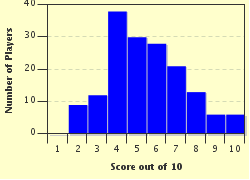Quiz Answer Key and Fun Facts
1. Many will be familiar with the humble Yule log as a traditional Christmas tradition, yet its origin lies in the Nordic celebration of Yule, when men would drag home and burn the biggest, wooden log they could carry. What was each spark of this Yule log fire believed to symbolize for the coming year?
2. Saturnalia was a popular, winter holiday that long preceded the celebration of Christ's birth, and thus the Christmas holiday that many people are most familiar with. So named in honour of Saturn, the god of agriculture and the harvest, Saturnalia was once described by which 1st century Latin poet, as "the best of days"?
3. In the modern age, the 25th of December is primarily associated with Christ's birth, and thus the annual festival commemorating that event, which is referred to as Christmas. However long before this, Pagan Rome was celebrating the birth of another, much revered figure, on the very same day. What was the name of this cherished deity?
4. It was not until the 4th century that the Church officially declared the 25th of December to be the day of Christ's birth?
5. By the Middle Ages, Christianity was far more established than it had ever been before. However the 25th of December was still an excuse for the majority to drink, eat and be merry, and the English ruling classes in particular had much to fear from this display of revelry. Why exactly was this?
6. During the seventeenth-century, the intemperate English attitude to Christmas was dealt a severe blow. Which group, helped along by Oliver Cromwell, did all it could to outlaw Christmas in England during this time?
7. Following a 1659 ban on Christmas, for 22 years the townsfolk of which colonial town had to pay a fine of five shillings, as punishment for engaging in any display of Yuletide spirit?
8. Is it true that for a period after Independence, Americans turned their backs on Christmas, due to its inherently British associations?
9. During the 24th and 25th of December, 1826, at New York's United States Military Academy, in West Point, a riot broke out, involving a significant number of cadets. What name was given to this overindulgent display of Christmas revelry?
10. During the nineteenth-century, in America, new Christmas traditions were springing up everywhere, with the advent of the first Christmas card, the debut of mistletoe and the introduction of the cheery Poinsettia plant. Which country is this popular red and green shrub indigenous to?
Source: Author
poshprice
This quiz was reviewed by FunTrivia editor
stedman before going online.
Any errors found in FunTrivia content are routinely corrected through our feedback system.

